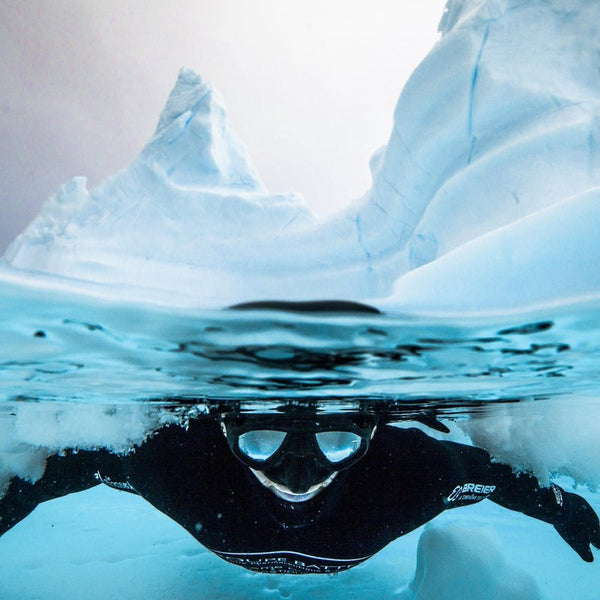Outex underwater photography Ambassador Alex Voyer's work featured on Netflix's Our Planet Documentary series
Apr 27, 2019
Alex Voyer: Capturing the Frozen World Beneath the Ice with Outex
Over the past few years, Alex Voyer has created some of the most breathtaking underwater images ever seen—featured in Netflix’s acclaimed documentary series Our Planet. An Outex ambassador, Voyer’s work combines artistry, adventure, and environmental storytelling, capturing life beneath the frozen surface of Antarctica in ways never seen before.

The Dream: A Pristine, Untouched Wilderness
“As an underwater wildlife photographer, it’s always been my dream to find a place untouched by humans—where whales glide freely, penguins soar underwater, and the only sound is the crackling ice,” says Alex. “That place exists: Antarctica.”
Getting there, however, was no easy task. To reach the icy continent, Alex and his crew first sailed from Ushuaia aboard a small sailboat, crossing the treacherous Drake Passage before reaching the southernmost waters on Earth. Once there, he plunged into 0ºC (32ºF) water wearing only a 7mm wetsuit, armed with his cameras and his Outex waterproof housing system to protect them from the brutal cold and pressure.
Alex Voyer's work featured on Netflix's Our Planet Documentary series.
Diving into the Unknown
Freediving in Antarctica offers a kind of stillness and purity few places can match. “When I jumped into the water for the first time, I was surrounded by humpback whales and hundreds of penguins flying underwater—it felt surreal,” Alex recalls. “Leopard seals came to say hello, and enormous icebergs towered over me. Everything was so immense, it was almost hard to comprehend.”
Voyer’s first expedition opened doors to a world he had always dreamed of exploring. Later, English film director Sophie Lanfear from Silverback Films—the team behind Our Planet—reached out, fascinated by Alex’s ability to capture gentoo penguins up close in their natural environment. His secret? Freediving.

A Different Way of Seeing
Unlike traditional underwater productions that rely on heavy scuba and rebreather systems, Alex’s freediving background offered a new perspective. “I don’t have the bulky tanks or gear, so I can move fluidly and respond instantly when something happens,” he explains. “It also changes how the animals interact with you—they become curious, not cautious.”
This minimalist approach allowed Alex to capture more intimate, natural footage of marine wildlife—moments that would later define the Frozen Worlds episode of Our Planet. “I could surface quickly, reposition, and dive again to follow whales or penguins as they moved. That agility helped create a sense of connection you rarely see in underwater film.”

Outex: The Essential Tool for Shooting in Extreme Environments
To withstand the extreme Antarctic conditions, Alex relies on his Outex waterproof camera housing. “Outex gives me complete freedom underwater,” he says. “It protects my gear from freezing temperatures and saltwater while letting me maintain full control of my camera. Whether I’m shooting stills or video, it’s light, compact, and adaptable to any setup.”

A Frozen World Brought to Life
Voyer’s work, now featured in the Frozen Worlds episode of Netflix’s Our Planet, is more than a visual triumph—it’s a poetic tribute to the beauty and fragility of Earth’s last wild frontiers. Through his lens, viewers experience Antarctica’s vast, untouched majesty in a deeply human way.
“My goal,” Alex says, “is to remind people that these places exist—and that they’re worth protecting.”
Watch Alex Voyer’s work in the Frozen Worlds episode of Netflix’s Our Planet, and discover how Outex helps him push creative boundaries in the most extreme conditions on Earth.




